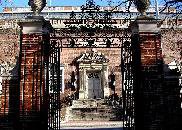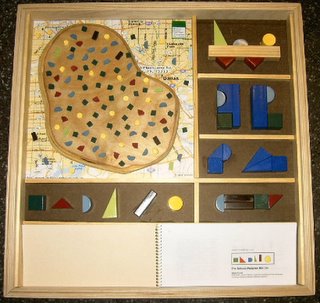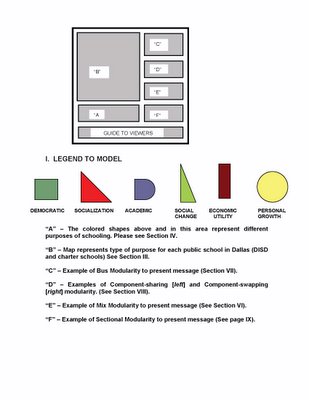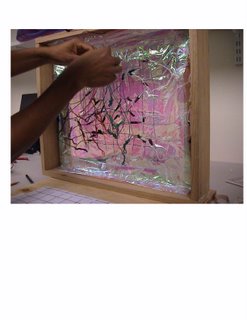

Harvard University, USA and Nicosia, Cyprus
Prescription of the Types and Pervasion of Connectivity by Mikael Powell
A. Introduction
Marc Andreessen, a co-founder of Napster, said “As bioscience becomes more computational and less about wet labs and as all the genomic data becomes easily available on the Internet, at the same point you will be able to design vaccines on your laptop”[1]. Thus is the destiny of technology in pursuit of advancement in health education. My research concerns the interrelationship between esteemed educational health facilities and how technology enhances the affiliation. The purpose of the research is to discover ways to connect the Harvard School of Public Health in Boston, Massachusetts and the Cyprus International Institute for the Environment and Public Health in Nicosia, Cyprus. This work analyzes the phenomenon of connectivity (and how it is affected by pedagogical models) with regards to the characteristic of being connected in a social, personal and operational way, and offers requirements for the new technology. It does not focus on technological detail, rather, it examines the broader scope- the more abstract themes that are relevant to this analysis with expectations that they will be personally applicable and prescriptively effective. Moreover, this document reviews criteria without deference to a particular pedagogy as it allows for ‘practice-based’ teaching methods for public health as well as traditional instruction. The Cyprus International Institute for the Environment and Public Health, sponsored by the Cyprus government, is administered by the Harvard University School of Public Health. Through research and communication, it aims to be a catalyst in the advancement of regional public health. Programs in Boston and Cyprus promote contemporary research, and the Cyprus initiative is positioned to develop local proficiency in environmental health and ultimately spur innovation to benefit the region. The education and information components provide high quality training and renowned professionals to benefit its students, peers and lay audiences through in-person interactions and various communication media.
The Cypriot initiative expands the reach of the Harvard School of Public Health – faculty members share responsibilities between the institutions and likewise, students cross-register between the programs. This “brick and mortar” facility heralds a significant milestone in the history of the Harvard School of Public Health as it is an official outreach with substantial permanence. The initial construction will include classrooms, research laboratories, offices, a library, an auditorium, a cafeteria and housing (to accommodate the high volume of visitors). “Identity, comfortable transition of the Harvard travelers between the two places, integrated digital media for daily interaction, and respect to the local traditions” were the primary concerns outlined by Professor Spiro Pollalis in a studio tasked to propose the design of the facility,” In order to create an environment that supports ‘the culture of innovation’, people must be able to directly interact on a casual as well as formal basis[2].”
B. Pedagogical Models and schools of Public Health
Several instructional approaches will be employed throughout the facility including traditional methods of lecturing, discussion, demonstration and hands-on approaches and contemporary practice-based educational processes. These offer technological opportunities for enhanced interaction within the classroom, between the two facilities and to the outlying public. Lecturing, typically used as the primary component in a structured presentation provides information or constructs an instructional framework. Discussion aims to accentuate the relationship between the instructor and participants within an identified topic, as well as share experiences between participants in a structured (whether prescribed or informal) environment. Demonstrations offer direct learning experiences and hands-on interactions and slows for maximum opportunity to learn multi-dimensionally. Participation can be enhanced through connectivity that spans distance and provides a venue for real-time interactions.
Practice-based methods can be described within the context of several principles which aim to integrate teaching and practice through a constellation of varied interdisciplinary activities to facilitate learning partnerships between students, educators, researchers, practitioners and the public. Great emphasis is placed on learning through actual involvement because “learning from experience in public health has civic roots, as exemplified in volunteerism and community service. The philosophy of experiential learning is that people learn most effectively through direct, hands-on experience, as long as these experiences are well-designed and facilitated”[3] within a program of experiencing, reflecting, planning and application.
C. General Manner of Connectivity
There are several ways in which innovative technology can support connectivity to enhance inter-classroom pedagogy, intra-facility communication, security, broadcast capabilities and shared presence. In addition, technical ways of connecting remote laboratories should involve an exchange of data that is certainly within the grasp of existing technology, but is ‘supra’ to side-by-side interactions. In addition, there are cultural ways of connectivity that are thematic or even textural. Since the facility will be occupied at the end of this decade, then some technology is unproven currently, indeed, it may be wholly premature to assign specifics products at this time. Thus it is important to map the requirements of technology when existing systems are inadequate or emerging technology untried.
This is the first initiative by the Harvard School of Public Health for a remote presence; therefore these concepts can be incorporated in the architectural design of the building. This research on connectedness will set the standard for the Harvard and undoubtedly other corporations with satellite offices.
D. Being connected Socially and Culturally
Within a global community perhaps technology, education and health are the building blocks of a depressed society aspiring to increase their status in the world[4] . This is abundantly evident in humanitarian initiatives by countries with the highest gross national product. Less developed countries, vie for that inter-relationship to boost their quality of life. That connection, whether as partner or patron or sponsoree is conceived and lived in a political environment quite aware of its boundaries. But being connected in a social context in regard to these issues can proffer an occasion for global professional allegiances, - a humanitarian society of health professionals philosophically bound by ethics, shared goals and access.
Connectedness in access is a significant utility to bolster social and cultural awareness. In the professional field, shared information is often reliant upon libraries and research depositories. Harvard University is connected to one of the largest library systems in the world. Library networks are strengthened and students and practitioner are empowered, when provided the opportunity to review a cadre of rare and sophisticated materials that would have been previously unavailable. Such unfettered exchange is not without forethought. Consideration must be given to the operational language of the system and interfaces with allow for cataloging and access of foreign language materials. Being socially connected may involve acquisition of translation services. And certainly, the network must be able to handle increased systems activity. The prerequisite to being socially and culturally connected is user training, which to be effective, must allow for the educational and cultural background of the individual in recognition of the political inequitabilities of their environ. As network connectedness is realized in mobile applications through advancements in nanoscience and power delivery, then profound global integration can follow. Geoffrey Kirkman of the Center for International Development at Harvard University stated ” The ability to remotely monitor environmental and health conditions, engage in project-based learning at a distance and effectively communicate where there once was virtually no communication at all could have revolutionary repercussions on the development impact of fieldwork”
In a network of connectivity, there is no isolation. Therein lays the basis of a humanitarian culture. Historically, in the United States, in the early 20th century, tracking through towns and neighborhoods was a network of boulevards, streets, and sidewalks. Daily pedestrian engagements were the norm. But due to several reasons, including the impact of automobile travel, federal regulations and standards and post war familial dynamics, a market has developed for “exclusive ‘communities’ where only a certain class of person ….is deemed worthy of sharing the streets and spaces of the neighborhood”[5] Actions to segregate public streets into gated communities or cloisters are common. Indeed, in many locales strangers are looked upon with disdain for daring to linger too long on a public sidewalk or “encroach” along a public street. Such feelings are an anathema to the spirit of social and spatial connectivity whether in the physical world or within cyberspace. Moreover, when one considers internet connectivity for social mobilization, whether concerning regional environmental issues or ones of discrimination, it was found, that it can be used to foster a sense of belonging and perhaps with proper administration it can be used to build a collective identity for social movements.[6]
Overseas, much research has been conducted in regard to participation in the Parliament through internet connectivity, undoubtedly, the Harvard initiative will be linked oftentimes in a dialogical network. Studies in England conclude that this condition “can be achieved through internet connectivity and if effective, can empower the institution. Such was the case in the Parliament study where they found that on-line consultations provide a space for inclusive public deliberation”.[7]
E. Being connected in a Personal way
The notion of individual connection to a public network, whether in a social, business or governance context requires considerations for responsibility and emotionality. “When you feel connected to everything, you also feel responsible for everything. You can not turn away. Your destiny is bound to the destinies of others. To seek enlightenment is to seek…the taking up of burdens. [8]” Such is the internal agony of being connected to everything in the universe with degrees of separation calculated in nano-seconds. Each person in their own way struggles with their shared responsibility for the actions of the network entity.
Innovative mobile technologies serve to keep us always connected to the network, whether for GPS security reasons, or business telecommunications, or even for scholastic access. Not surprisingly, there may be personal consequences to always being tethered. Some ardent producers may develop a problem in learning to “turn it off”. Psychologist, Martin Factor, says that "always-on connectivity may create anxiety when we [do] disconnect”.[9] When one considers the opportunities for connectedness between The Harvard School of Public Health and the Cyprus International Initiative it may not be hard to reach overload situations. On the other hand Linda Stone, a former Microsoft vice president, has coined the moniker "continuous partial attention" which describes the quality of an individual developing a main and peripheral focus, which she offers as a useful occupational tool. Stowe Boyd, the president and COO of Corante surmises that” Most think of it as a disorder. However, CPA is the state of mental blurriness thought to be induced when information is constantly pouring in from multiple sources. It can be a reasonable strategy for dealing with a sped-up world, but it requires shifting the measurement of productivity away from the individual -- like 'IQ' tests -- and looking at the productivity of connected groups. More than ever, we are connected beings. Now we have to figure out, as a society, when it's proper to ask someone to disconnect--and in effect, to cut off a part of them.[10] “
Some surmise that being connected in a personal way extends beyond the psychological to the psychic realm. Carl Japikse said “Every time you think of someone, you are psychically connected to them, even if they are miles away. This linkage occurs even if you have not met the person, so long as there are enough elements known to connect you. "Once he focuses on you (even if he did not know he was doing so), he began examining elements close to you. In essence, a portion of his consciousness was exploring your habitat…[11]."
F. Being connected in an Operational way.
Functionally, the byproducts of informational connectivity, or interaction, can be described by operations of communication and collaboration whereby the former is an exchange of information to satisfy that end and the latter occurs when two or more seek to produce a common expression. Oftentimes collaborative efforts are combined with strict communication e.g. a collaborative authoring system (collaboration) equipped with a chat feature (communication).[12] This is important when distinguishing the need for communications connection with the opposing location in congruence with collaborative enhancements. Discernment is required to allow facilitation, in most respects, rather than obtrusive oversight. Whether in this cooperative academic setting or in the commercial businesses, consideration must be given to provide the appropriate connection amenities to accommodate the work environment and save costs.[13]
Understandably, laboratory education is costly for universities, both in construction of specialized facilities as well as innovative equipment and its operational needs, training and maintenance. A contemporary method is that of the “shared” or “connected” laboratory that is virtual and internet based. “The virtual laboratory utilizes real equipment distributed among multiple universities from which remotely located students can perform experiments. The software solution is a multi- user, client-server architecture. Implementation includ[es] video, chat, archiving, and specific hardware and software platforms”[14]. Specific experiments are coordinated between each institution (time zone differences can favor full utilization). A lesser technological version of this would be to utilize common testing software that allow data stream either in a synchronously or asynchronously transmission.
Likewise, in utilizing operational connectivity, the University of Western Australia has been on the forefront in developing and testing new technologies for student learning using the Internet to develop new styles of education using simulation, theory, and laboratory equipment[15]. Results for interactive television for distance education have been abysmal. Currently, the technology involved can be restrictive to the professors’ pedagogical methods and results show that students are less engaged. The compromises made in the quality of teaching and learning must be carefully considered when evaluating options for conventional face to face instruction.[16] Innovative advances in the development of interactive multimedia courses and experiments like the virtual classroom[17] seem promising for the shared, distance education. And, trends in mobile telephony in the UK and other countries have been more proposed for inclusion in the classroom. “Current work in educational technology may contribute toward a move towards using mobile telephony in education as a potential enhancement, and minimizing the nuisance effects and stigma in the process.[18]
G. Spaces and functions, requirements needed by connective technology
This research focuses on five prominent spaces in the facilities. They are classroom/lecture rooms, commons, auditorium, dorms and laboratory.
1. Classroom/Lecture (about 300 sq. meters in Phase 1) - Connective Technology
Video – conferencing
Audio conferencing
Internet based presentations
Computer mediated communications
a. Normative requirements
· Ability to clearly transmit information between locations
b. Supra requirements
· Providing rudimentary interactivity and supportive material at real time during class with personal archiving capabilities.
· Passive Student tracking (for security and class management)
c. Other issues
· Examples of practice- based pedagogy in classroom-centered modalities include case studies, tabletop exercises, role-playing activities, courses on building community organizations, presentation of field trips, skills-based workshops and problem-based learning
· Provisions for delivered multi-media presentations[19].
· Wireless technology access station
Prototype classroom: Immersive, collaborative learning environment that can support both in-class and distant learners simultaneously. It includes high-resolution video displays, high-quality microphones and speakers; a system similar to Mitsubishi Research Lab's "UbiTable" project, which offers both the affordances of a physical table, along with the flexibility of electronic sharing of documents and other types of information) and networked tablet PCs to enable interactive note-taking as well as shared and individual problem-solving under an instructor's guidance[20].
2. Commons/Lobby (about 200 sq. meters in Phase 1) - Connective Technology
· Surveillance Technology
a. Normative requirements
Records image of the commons area for active use/archival resource and documents normative patterns of use and alerts to discordant movements.
· Information Center
a. Normative requirements
Technology space that includes individual and group casual stations, wireless networking, reference and resource utilities, local and international news images.
· Shared Telepresence
a. Normative requirements
Environmental accessories which constitutes a two dimensional real-time medium for shared interaction between individuals[21].
· Virtual presence
a. Normative requirements
The space is incorporation into a subscription based massively multiplayer online game (MMOG) similar to the Harvard Graduate School of Business structure[22].
· Wireless technology access station
· Passive Student tracking (for security and campus management )
3. Auditorium (about 400 sq. meters in Phase 1) -Connective Technology
Video – conferencing
Audio conferencing
Internet based presentations
a. Normative requirements
· Ability to clearly present information and transfer between locations.
b. Supra requirements
· Provision for broadcast, web cast and taping capabilities.
· Rudimentary interactivity and supportive material at real time during presentation with personal archiving capabilities.
· Passive audience tracking (for high security engagements)
c. Other issues
· Provisions for delivered multi-media presentations
· Wireless technology access station
· System components include a comprehensive lecture console, television cameras, sophisticated audio capability, video projection and screen, document transfer writing surfaces, document camera and room controls system.
4. Dorms- Connective Technology
· Surveillance Technology
a. Normative requirements
Records image of the commons area for active use/archival resource.[23]
b. Supra requirements
Technology that documents normative patterns of use and alerts to discordant movements.
· Information Center
a. Normative requirements
Technology space that includes individual and group casual stations, wireless networking, reference and resource utilities, local and international news images.
· 3 dimensional Shared Telepresence
a. Normative requirements
Portal constructs which allows for three dimensional real-time interactions for shared interaction between individuals with haptic interface.
· Virtual presence
a. Normative requirements
The space is incorporation into a subscription based massively multiplayer online game (MMOG).
· Wireless technology prototype: Garrett Hall (the e-dorm) University of Maryland, College Park, Md. provides desktop videoconferencing, multimedia messaging, high-speed data connections, voice over the Internet and wireless roaming technology.
· Passive Student tracking (for security and campus management)
5. Laboratory (about 500 sq. meters in Phase 1) - Connective Technology
Shared Virtual Laboratory
Internet based system
a. Normative requirements
Shared component system with collaboration and real time communication and archive functions.
b. Supra requirements
Providing supportive material in real time with experiment progression data.
· Security access system.
· Provisions for delivered multi-media presentations.
· Wireless technology access station
H. Conclusion
Our connection to the world, through technology, is a multi-dimensional link. There are personal, social and functional considerations to be weighed when one considers relationships within the educational environment, between facilities and to the greater public. Certainly, deference to security is in order, as the Cyprus Initiative in its first stage will have rooms occupied on a 2-hour basis. Cultural connections homeward and familial relationships are essential to maintain as all doctoral students will spend 50% of their time in Cyprus on research related to Cyprus and the region and conversely a contingent will be studying in Boston. On an operational level resource efficiency requires that a proper network be maintained within facilities - indeed between teacher and student. So this phenomenon of connectivity is crucial to take into account as we incorporate innovative technology to enhance the teaching and dissemination of information at these facilities.
-end-
© Mikael Powell (2006)
[1] V.A – Mark Andreessen, a co-founder of Napster, from “It’s a Flat World, After All” by Thomas L. Friedman, New York Times Magazine, April 3, 2005.
[2] Harvard in Cyprus: a studio at the Harvard Design School, Prof. Spiro N. Pollalis (2006).
[3] ASPH Council of Public Health Practice Coordination (2004),Demonstrating Excellence in Practice-based Teaching for Public Health.
[4] http://cyber.law.harvard.edu
/itg/libpubs/beingconnected.pdf
“Commerce, Education and Health, the three building blocks of a society” page 14.
[5] http://charlotte.creativeloafing.com
/2004-09-29/news_walters.html
Online Magazine- Creative Loafing.com
[6] The Queer Sisters and its Electronic Bulletin board, by Joyce Y.M. Nip, Information, Communication & Society Vol. 7, No. 1, March 2004, pp. 23 -49.
[7] Connecting Parliament to the Public via the Internet- Two case studies of online consultations, by Stephen Coleman, Information, Communication & Society Vol. 7, No. 1, March 2004 , pp. 1-22.
[8] http://www.powells.com/biblio?show=
TRADE%20PAPER:NEW:0393322815:11.95
&page=excerpt#page ‘Daily Afflictions: The Agony of Being Connected to Everything in the Universe
by Andrew Boyd
[9] http://www.telecommutect.com
/content/upsanddowns.htm
The Psychology of Always-on Connectivity
[10] http://www.continuousblog.net
/2005/07/social_machines.html
Linda Stone, a former Microsoft vice president and a widely respected authority on human-computer interfaces.
[11] http://home.comcast.net/
~wjjw/remoteviewing.html, Carl Japikse
[12] The Interaction Society: Practice, Theories and Supportive Technologies, Mikael Wiberg, InformationScience Publishing 2005.
[13] http://blog.datamation.com/blog/archives
/2005/10/theres_being_co.html
[14] http://www.pserc.org/cgi-
pserc/getbig/publicatio/2003public/
albu_remote_experimentation.pdf
Contributed by Florin Mihai, member of the VLab team at Politehnica University of Bucharest. Mihaela M. Albu*, Keith E. Holbert**, Gerald T. Heydt**, Sorin Dan Grigorescu*, Vasile Trusca*, *Politehnica University of Bucharest, **Arizona State University
[15] http://telerobot.mech.uwa.edu.au/
index2.html
Australian Tele-lab project.
[16] “Interactive Television in Distance Education: Benefits and compromises”, by Liang Zhao, presented at the IEEE, 2002 International Symposium on Technology and Society (ISTAT’02), Social Implications of Information and communication Technology proceedings June 6 – 8, 2002 Raleigh, North Carolina.
[17] “Multimodal Delivery systems” by professor V.R.Jagannathan ,presented at the IEEE, 2002 International Symposium on Technology and Society (ISTAT’02), Social Implications of Information and communication Technology proceedings June 6 – 8, 2002 Raleigh, North Carolina.
[18] “Mobile Telephony and Learning: Nuisance or Potential Enhancement?”, Andy Stone, presented at the IEEE, 2002 International Symposium on Technology and Society (ISTAT’02), Social Implications of Information and communication Technology proceedings June 6 – 8, 2002 Raleigh, North Carolina.
[19] http://www.agocg.ac.uk/reports/
mmedia/casestdy/hw/backgrou.htm The Advisory Group on Computer Graphics (AGOCG) was an initiative of the Joint Information System Committee of the Higher Education Funding Councils and the Research, April 1999 “Councils.Managing, Delivering and Supporting Lecture Room Services for the Multimedia Age”.
[20] hms@harvard.edu, This project is a web-based teaching and assessment program at the Harvard Medical School and the Brigham and Women's Hospital.
[21] Powell, M. “Initiating Ethics for Ghost-mapping in Architecture, Education and Performance”(2005) http://mikaelpowell.blogspot.com
/2005_12_01_mikaelpowell_archive.html
December 28, 2005, 4:50 PM.
[22] Leinss, M. “Second Life: The merging of the virtual realm and real world”(2006)Coursework for GSD4337 Digital Media Space and Society.
[23] Malwitz, Rick ,“Rutgers security goes high-tech, cuts staff” Home News Tribune Online 05/24/06.
(COPYRIGHT © 2006 MIKAEL POWELL. All Rights Reserved)


